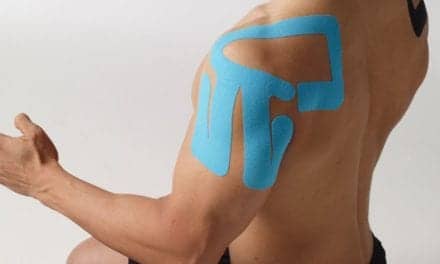A new study by researchers at Hospital for Special Surgery (HSS) in New York City provides attainable goals for return to sports and related physical activities for patients who have undergone procedures to correct progressive collapsing foot deformity (PCFD), a severe musculoskeletal pathology that can drastically inhibit a patient’s daily function. The findings were presented at the American Academy of Orthopaedic Surgeons (AAOS) 2022 Annual Meeting.
“This procedure is the epitome of big surgery,” says Scott J. Ellis, MD, an orthopaedic foot and ankle surgeon at HSS and the senior researcher on the study. “It is associated with a long recovery period, and patients are quite immobile even before they reach the operating room. As a result, even surgeons want to know: Is this going to be worth it?”
Ellis adds, “PCFD is a debilitating condition marked by several progressive deformities that require a combination of extensive reconstructive procedures, from cutting and reshaping bones in the foot to rerouting tendons in the fallen arch. Although patients can expect to eventually resume at least light to moderate physical activity, the recovery period can take many months to a year or more, and some of the most vigorous sports may not be possible.”
HSS Researchers Analyzed Patient-Reported Data
This study is an attempt to quantify the recovery period for individual activities. The HSS research team, led by clinical research scientist Robert Fuller, analyzed patient-reported data from 82 patients, aged 18 to 60 years, who had undergone reconstructive foot surgery at the hospital between February 2016 and May 2019. About three-fourths of the patients were women, and the average time since surgery was approximately 3 years (range, 2 to 5.4 years).
Patients were asked about their ability to return to 21 physical activities, such as yoga, biking, walking and running, as well as their overall level of function, pain and other outcomes using the HSS Orthopaedic Foot and Ankle Registry, a rich repository of data that helps clinicians and researchers better guide treatment decisions.
According to the findings, patients said that half of the 21 activities had become easier for them to perform after surgery, while 33% experienced no difference and 17% said the activities had become more challenging. Improvements in physical function (P=0021), pain (P=0.001) and global physical health (P=0.001) were associated with statistically significant increases in patient satisfaction with respect to sports and physical activities.
No patients surveyed said they had stopped doing activities they had performed before surgery, but many said they had taken up new activities—mainly low-impact pursuits such as walking, biking and swimming. Overall, 74 of the 82 patients (90%) reported being somewhat to very satisfied with their ability to be active, while just eight (10%) said they were unsatisfied with the results of the surgery in that regard.
The most exciting part of the study, Fuller said, was that the researchers were able to collect enough data on individual physical activities that they can now advise patients not only on the types of activities they can expect to carry out, but also on the length of time they can expect to be off their feet after surgery.
“We think this study gives us the ability to say to a patient, ‘If you’re interested in doing yoga again, you can expect to return in about six to nine months and be back to full form in about a year,’” Fuller says. “It can help provide clarity for a lot of people showing these surgeries can be life-changing in terms of getting them active again, but a substantial amount of people will face some extended recovery.” Indeed, the researchers found that 22% of patients said they never reached their maximum preoperative level of participation in physical activities, and 26% said the difficulties they experienced in performing activities had increased after surgery.
Not surprisingly, Fuller says, people who undergo foot reconstruction can resume low-impact activities—faster than those who practice more demanding sports such as dancing, jogging, skiing or basketball. However, “we observed great progress in both high- and low-impact activities,” he adds.
Although the new research highlights the effectiveness of the reconstructive procedure, Fuller and Dr. Ellis said more work is needed to help standardize good outcomes for patients. At HSS, Dr. Ellis and his colleagues are using new technologies such as weight-bearing CT scanning to help identify which bones in the affected foot are collapsing and which ligaments are failing to better understand the anatomy of the deformities and optimize the surgical plan. They also are incorporating a computer modeling technique called finite element analysis to simulate how the foot will appear after the bones and other tissues are cut.
“We plan to use the data from this study to provide patients with realistic expectations and timelines regarding their return to sports activities after collapsing flatfoot reconstruction, and as a resource for patients at the time when surgery is being discussed,” Ellis concludes.
[Source(s): Hospital for Special Surgery, EurekAlert]





